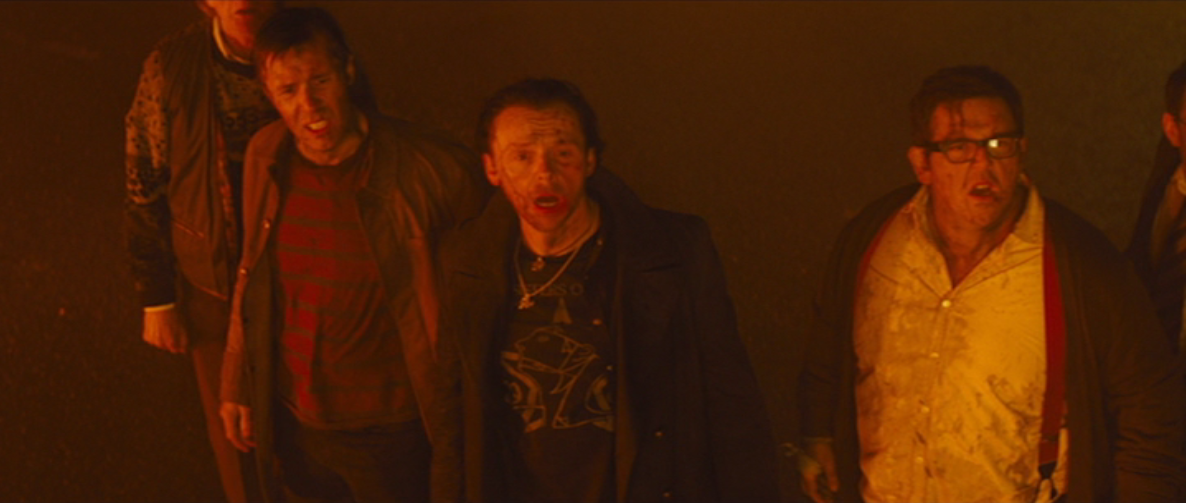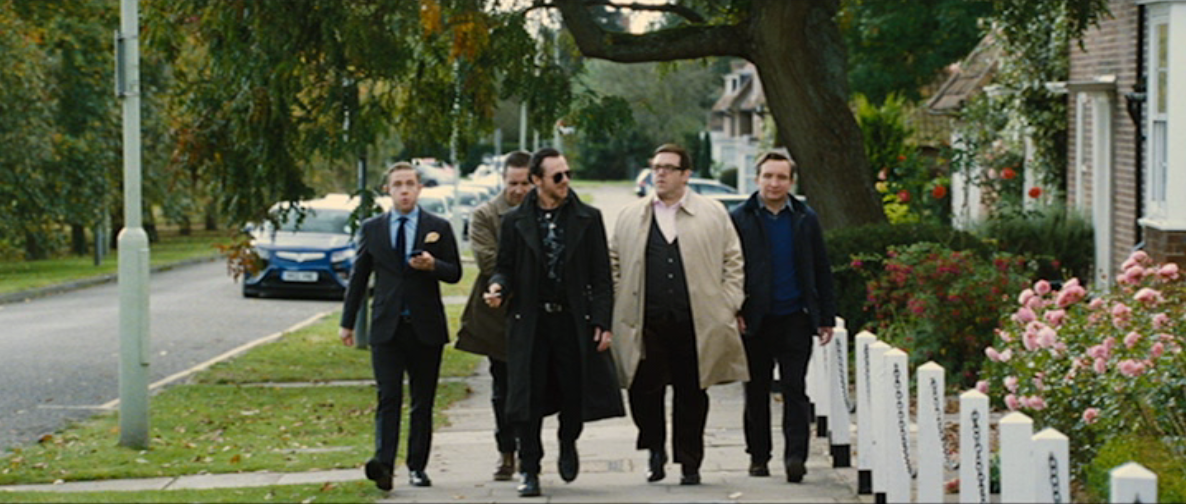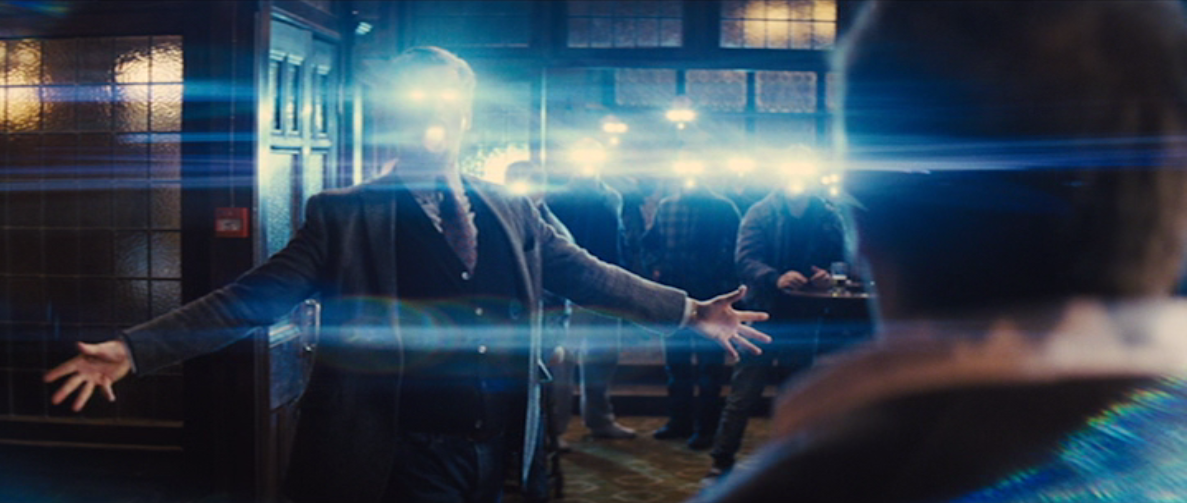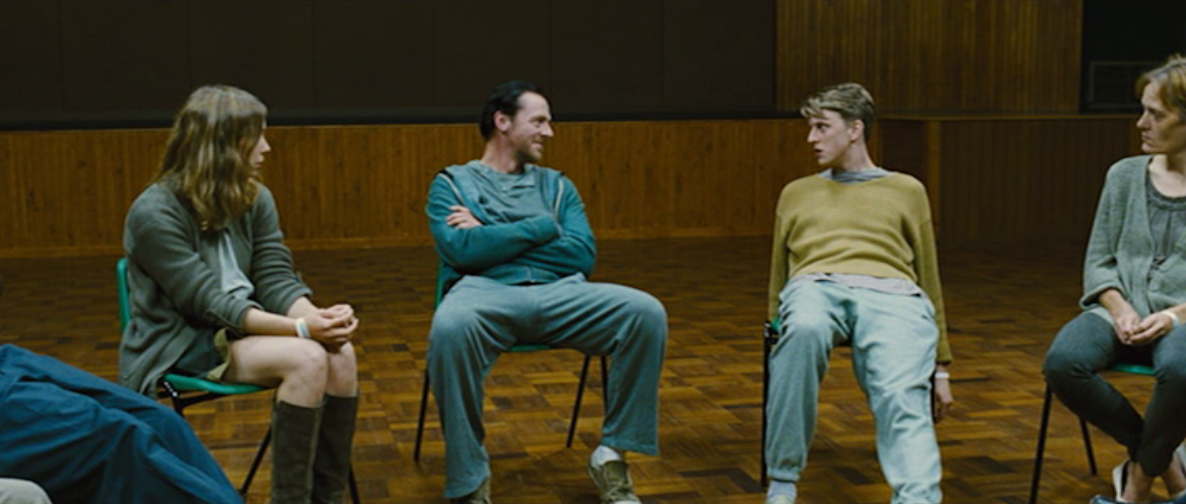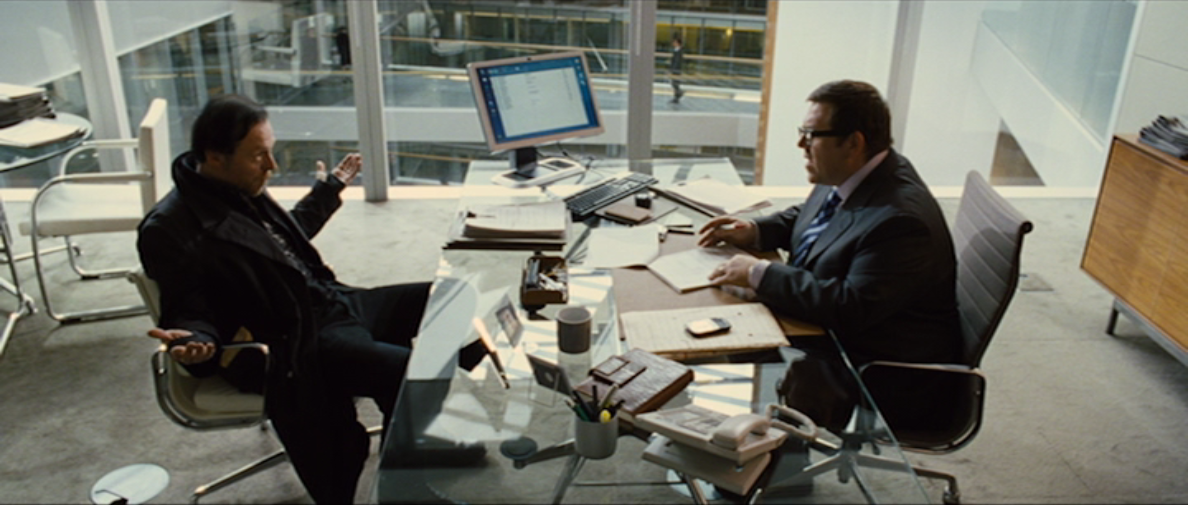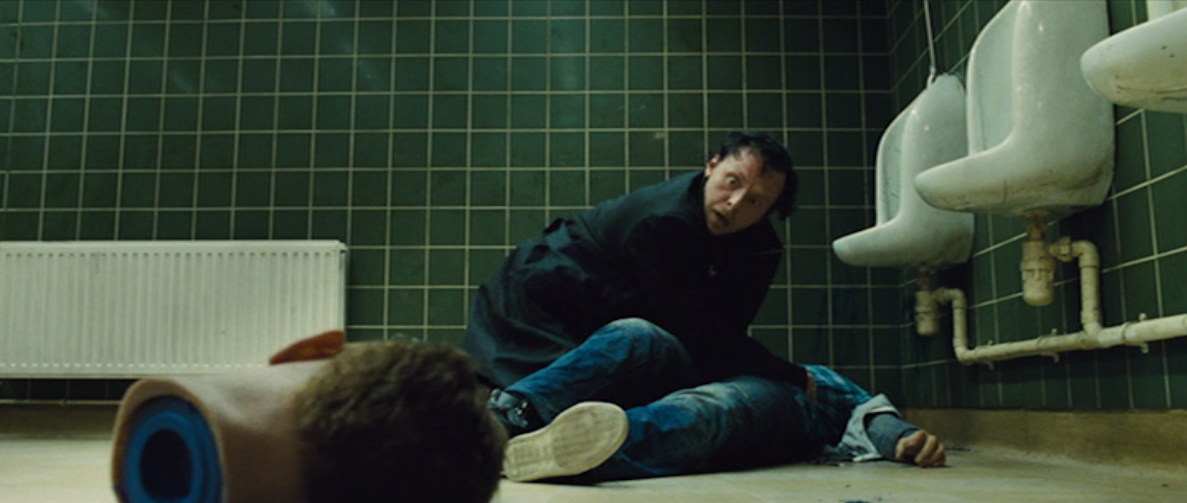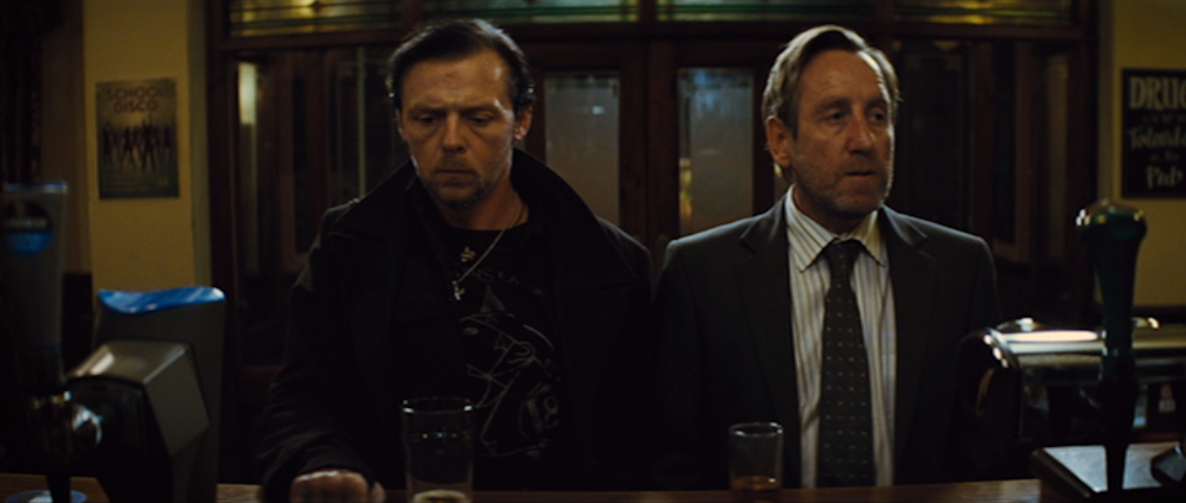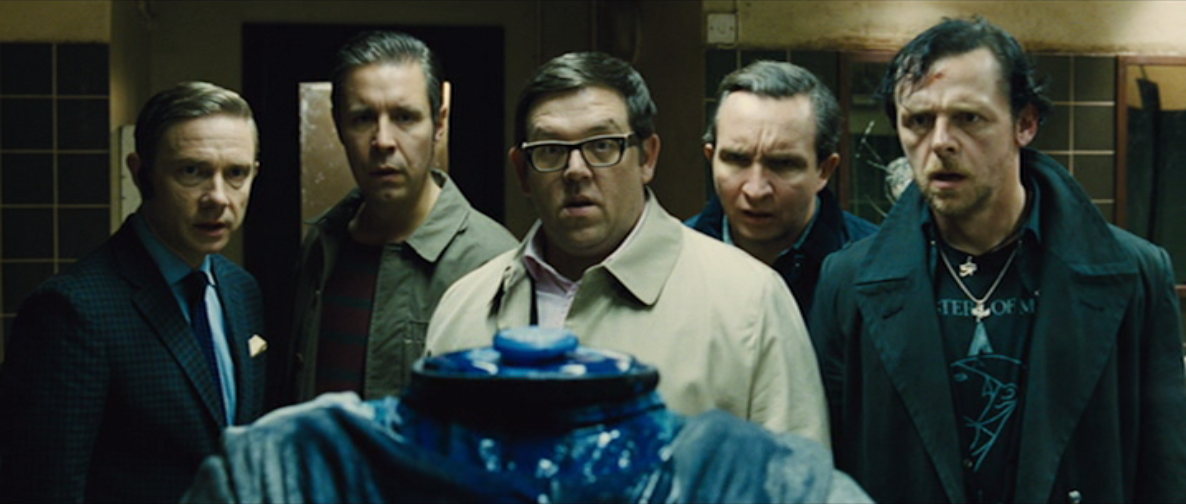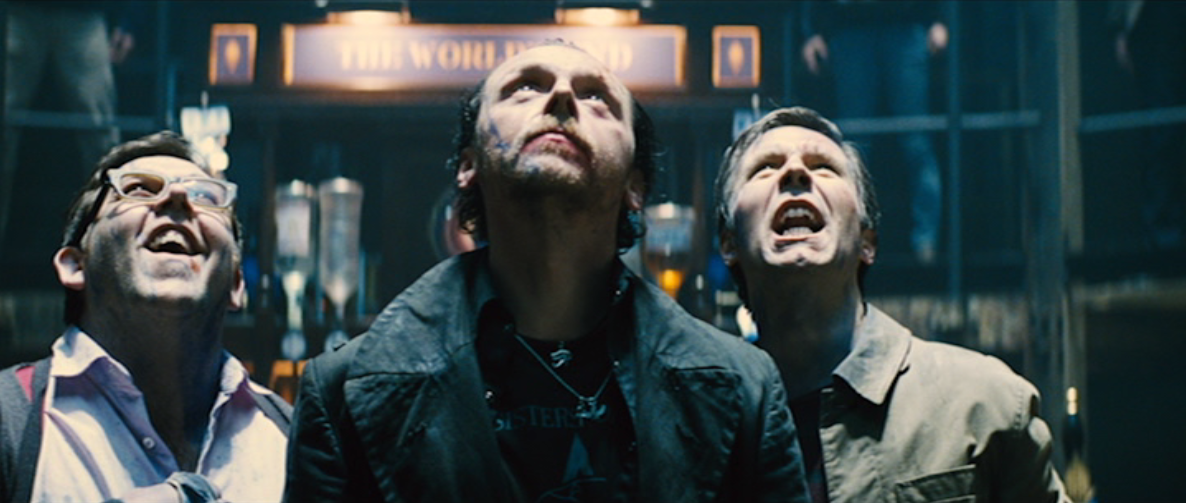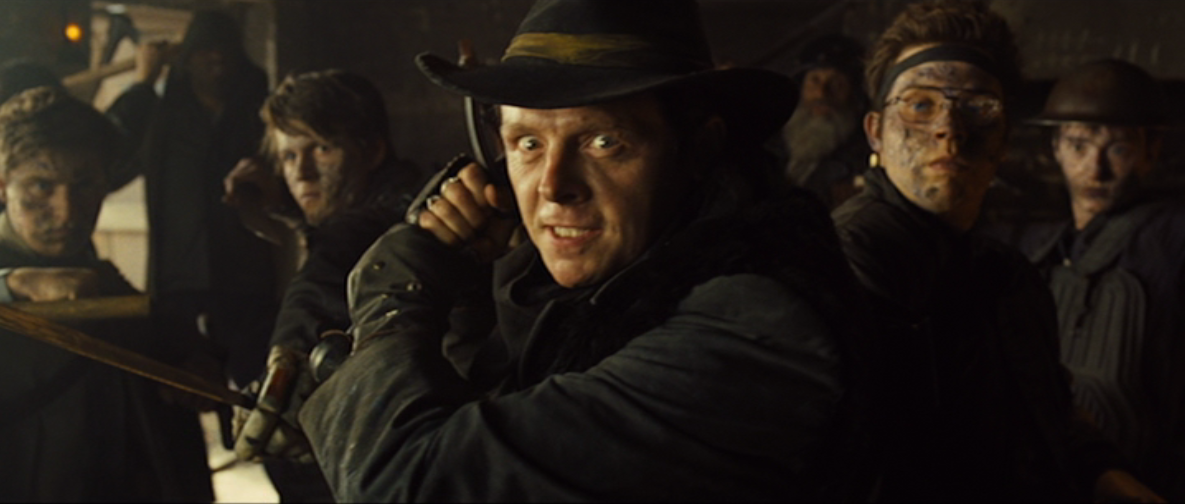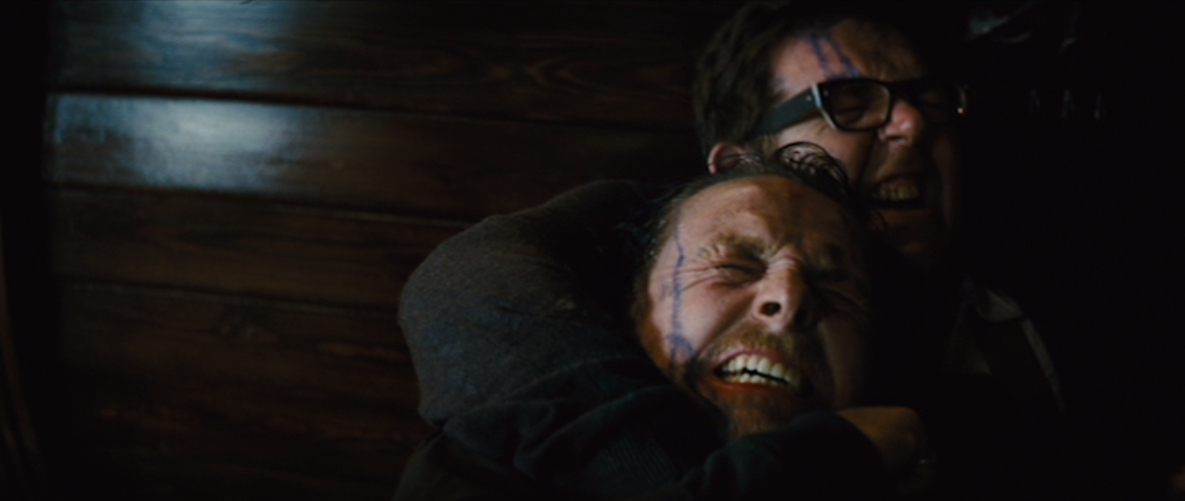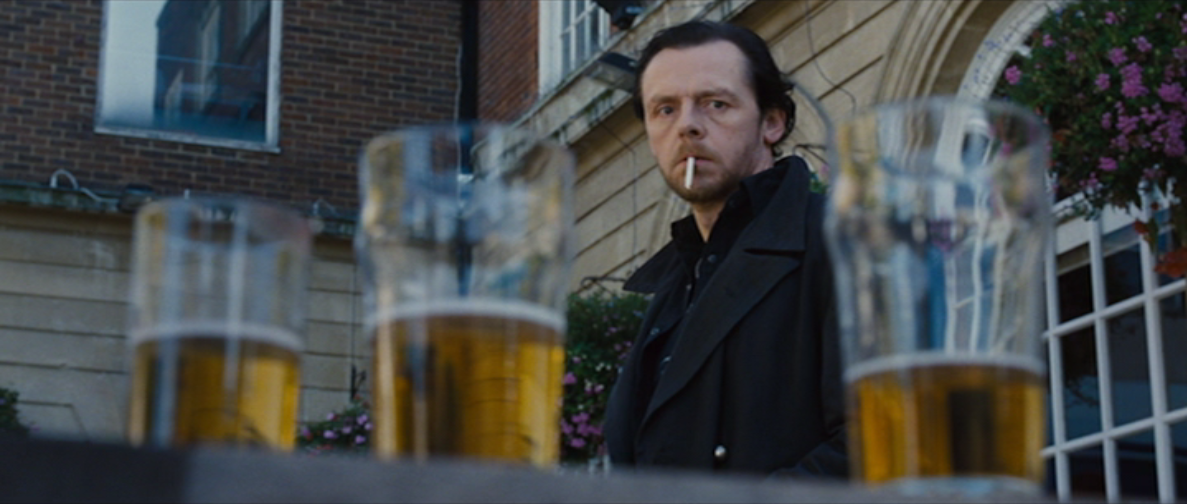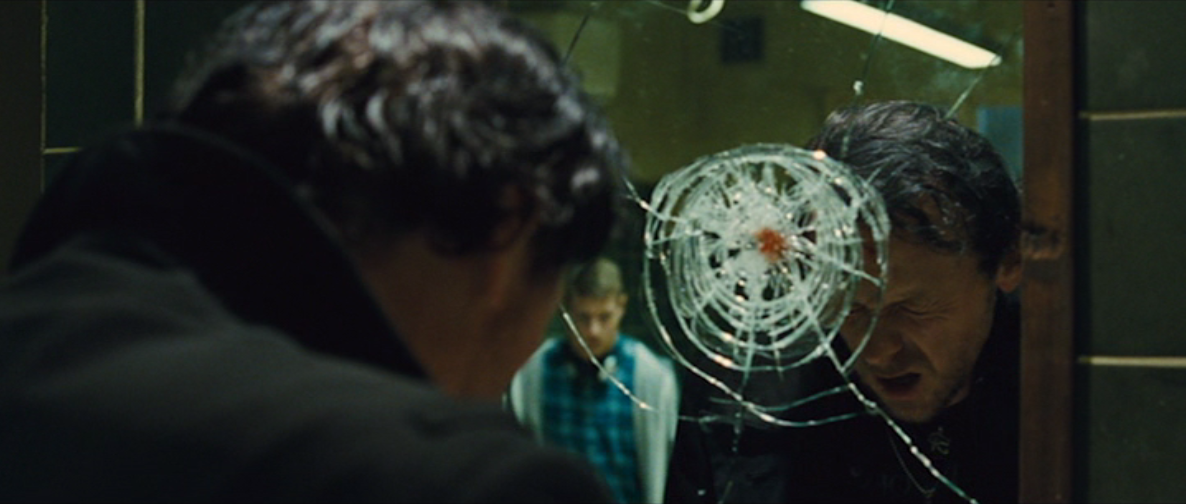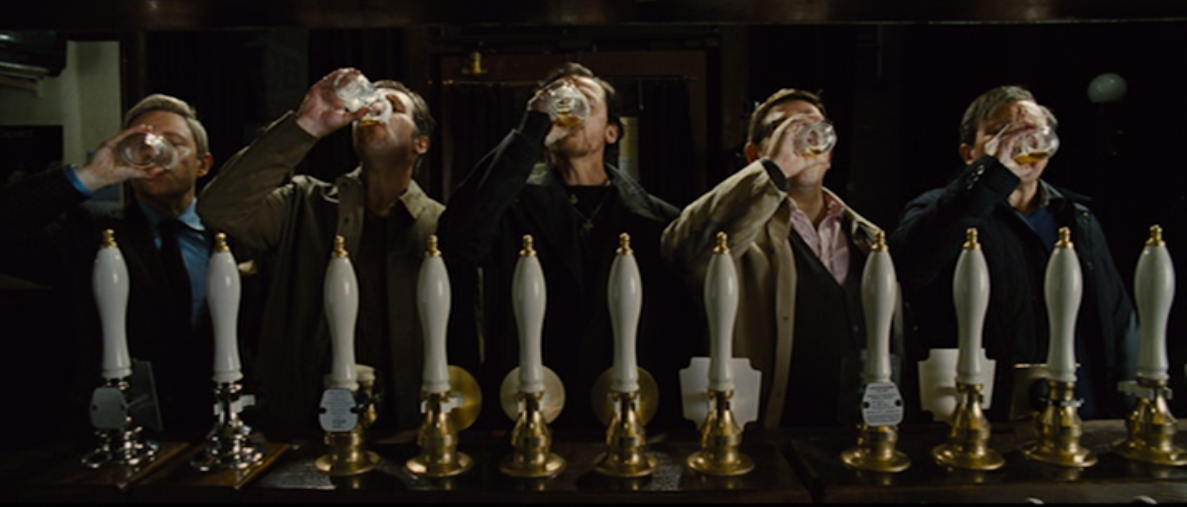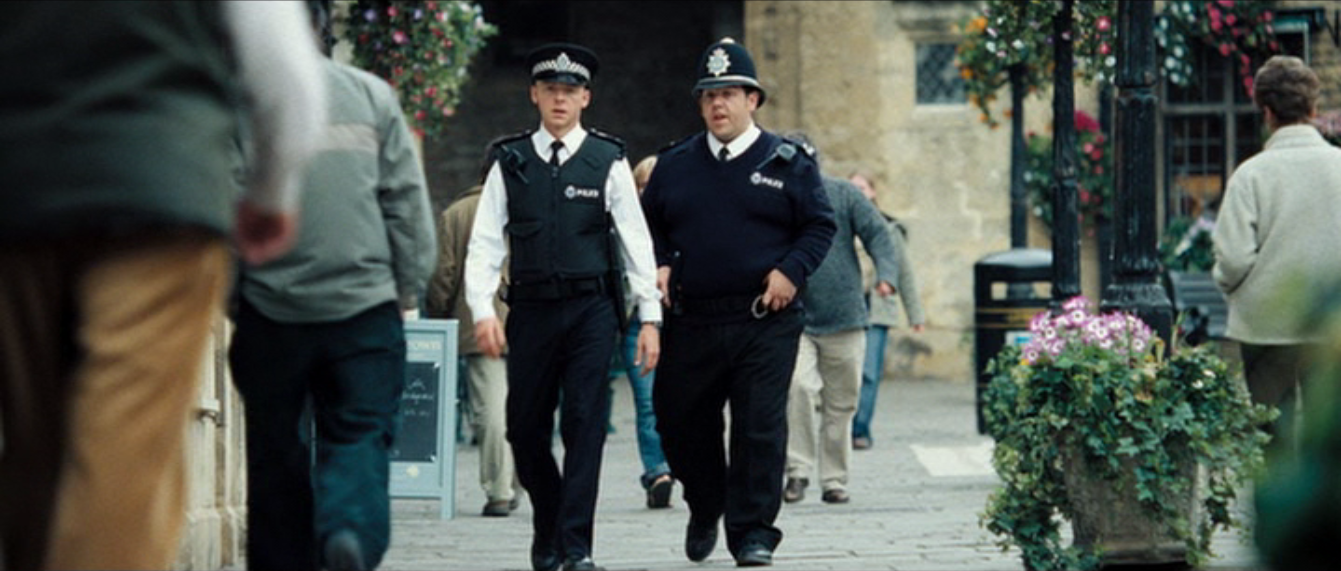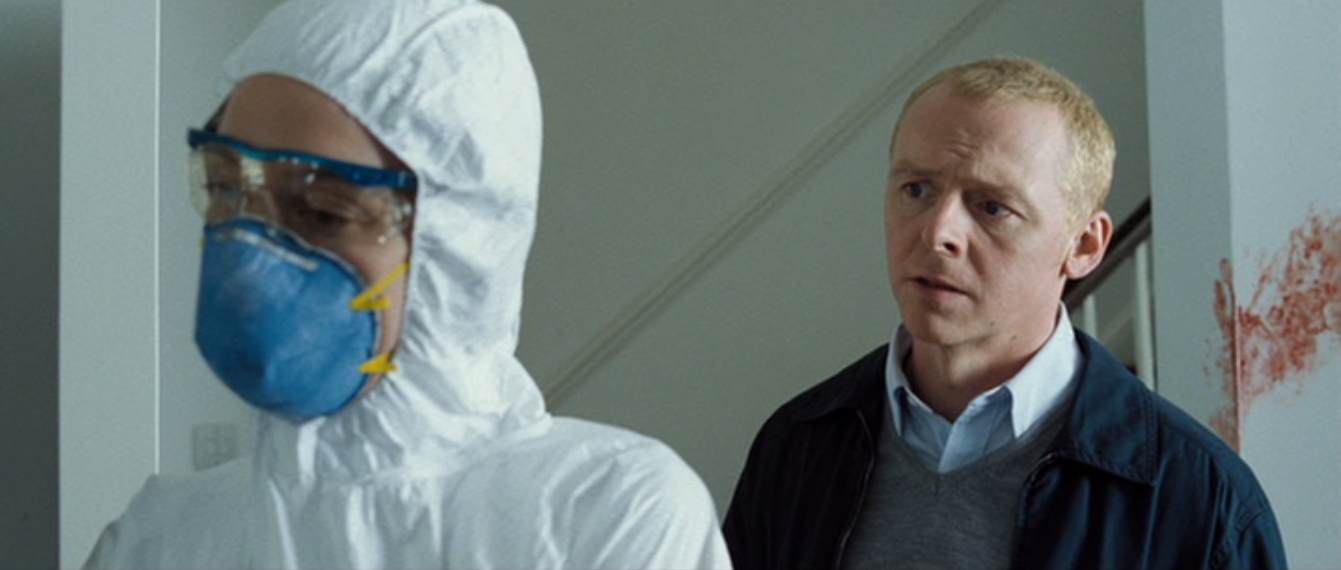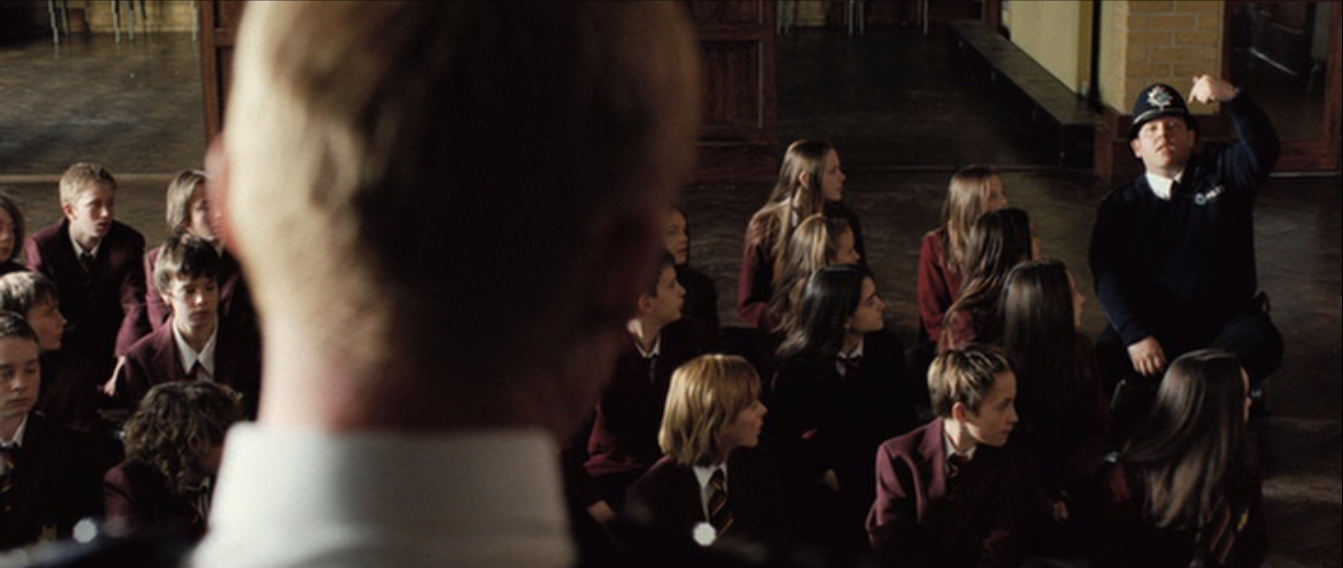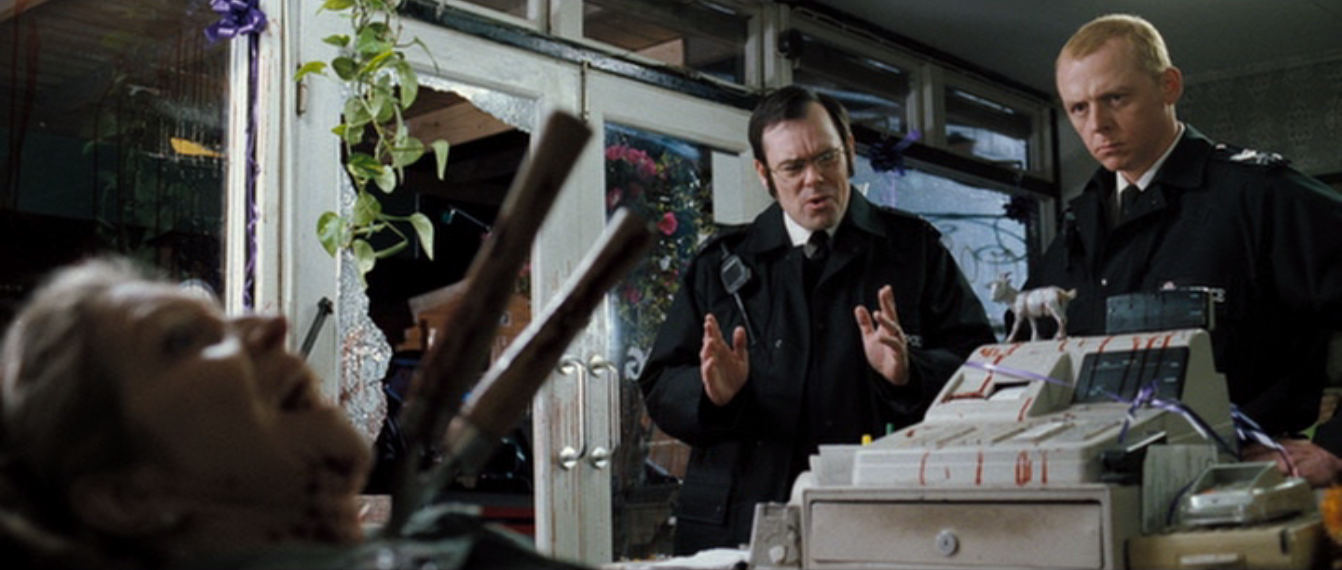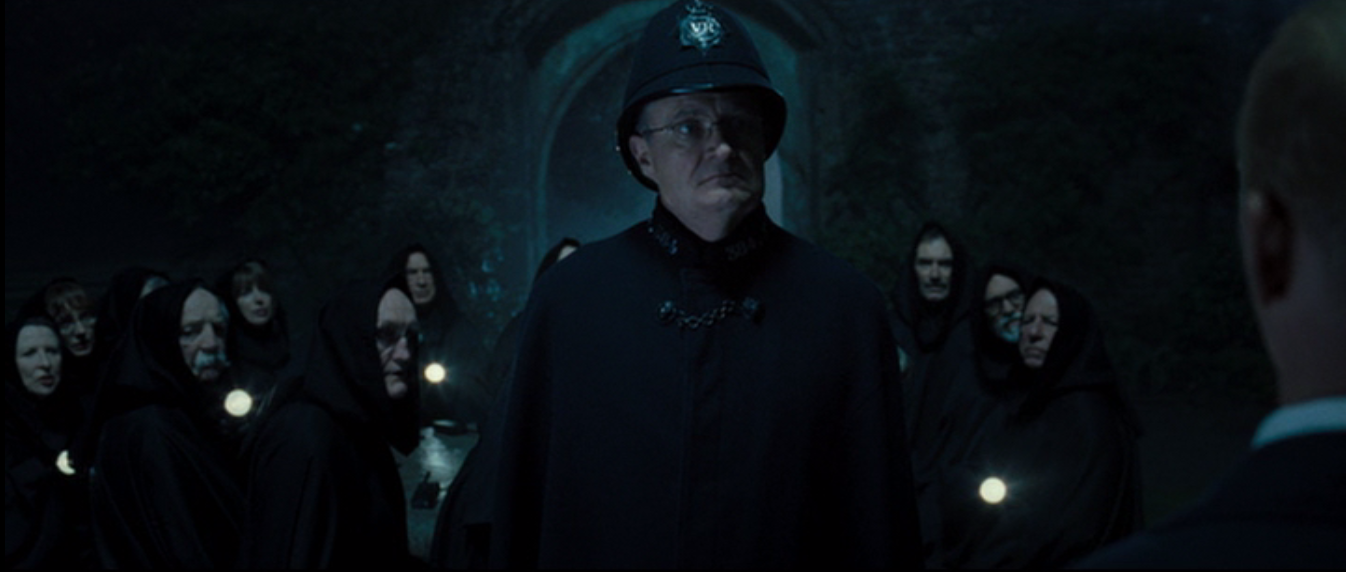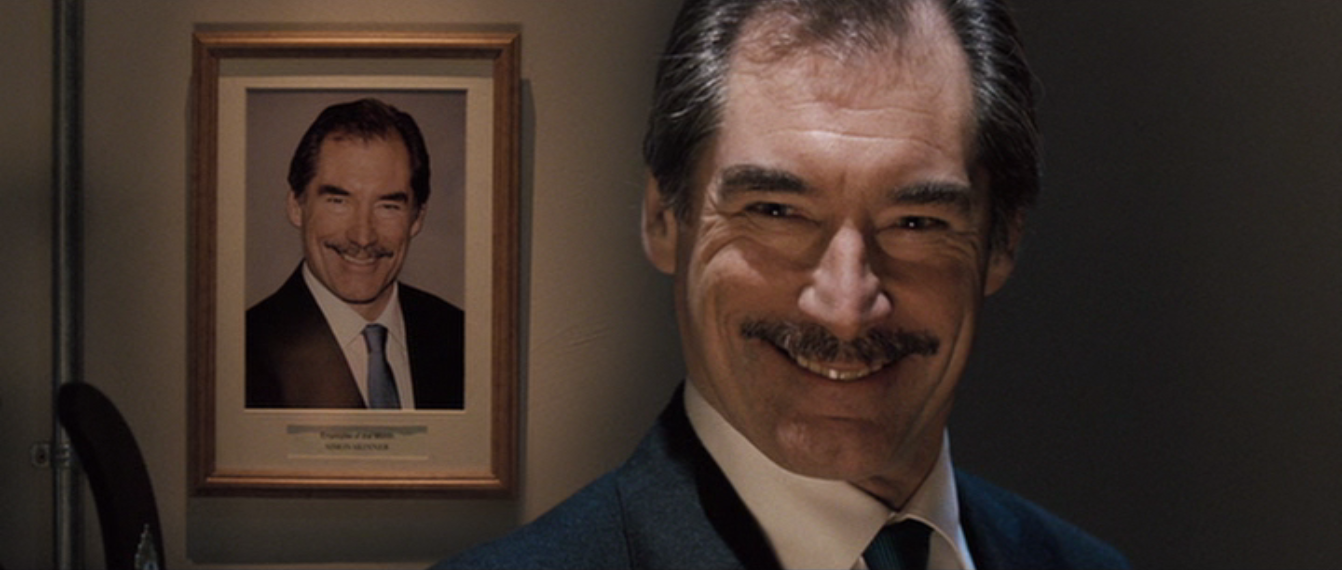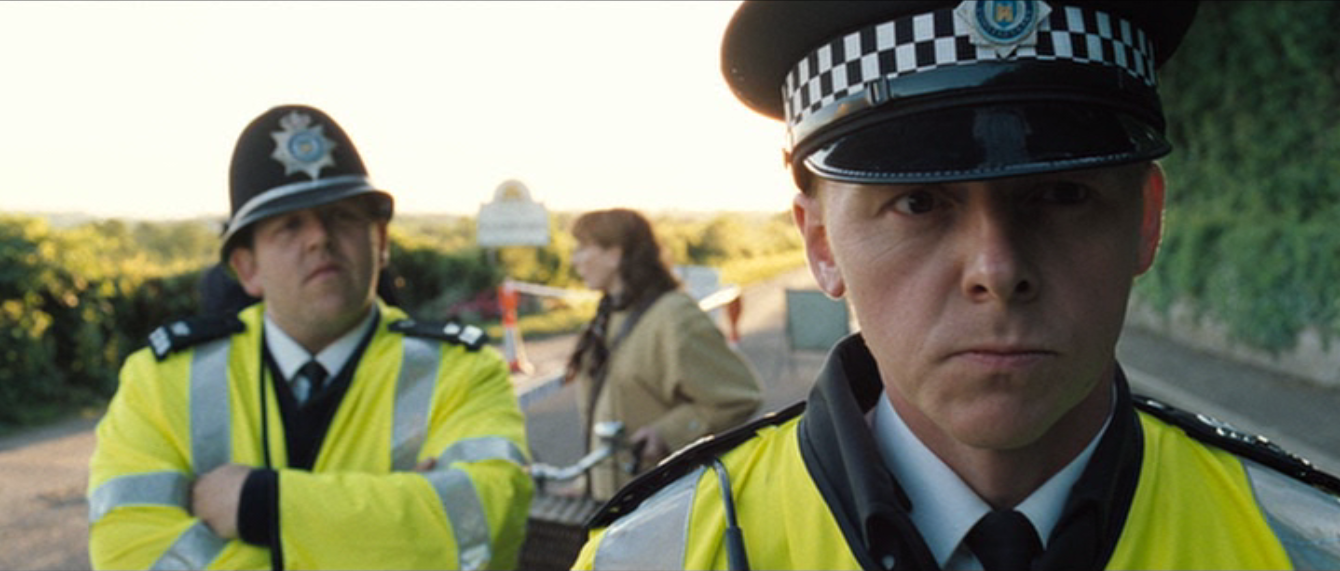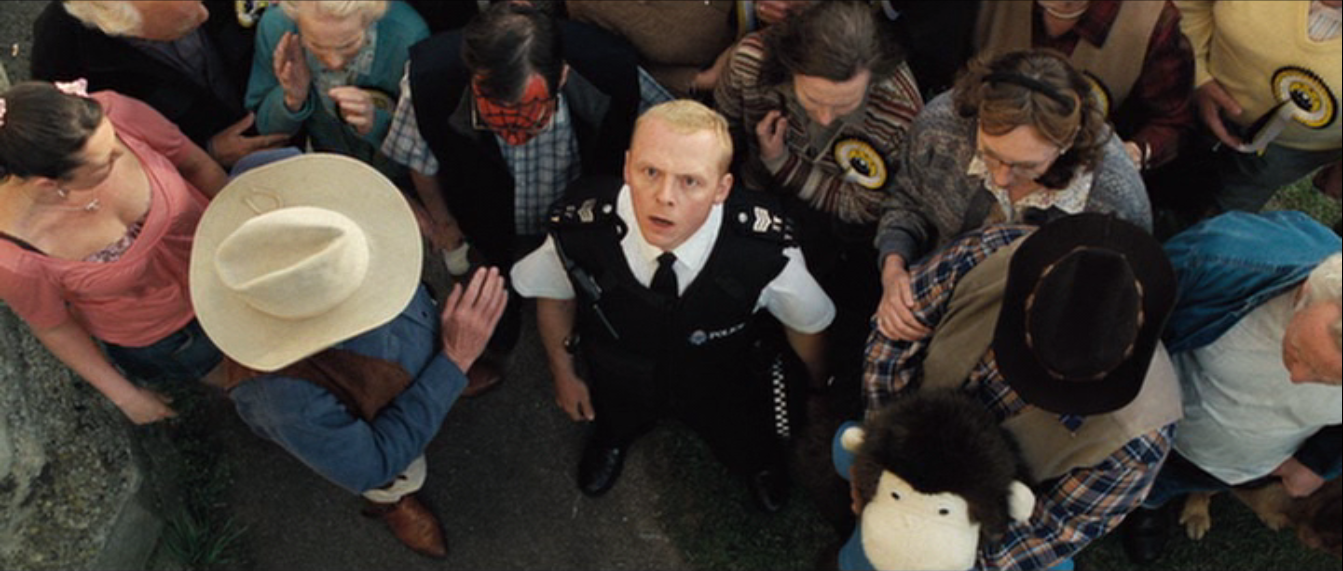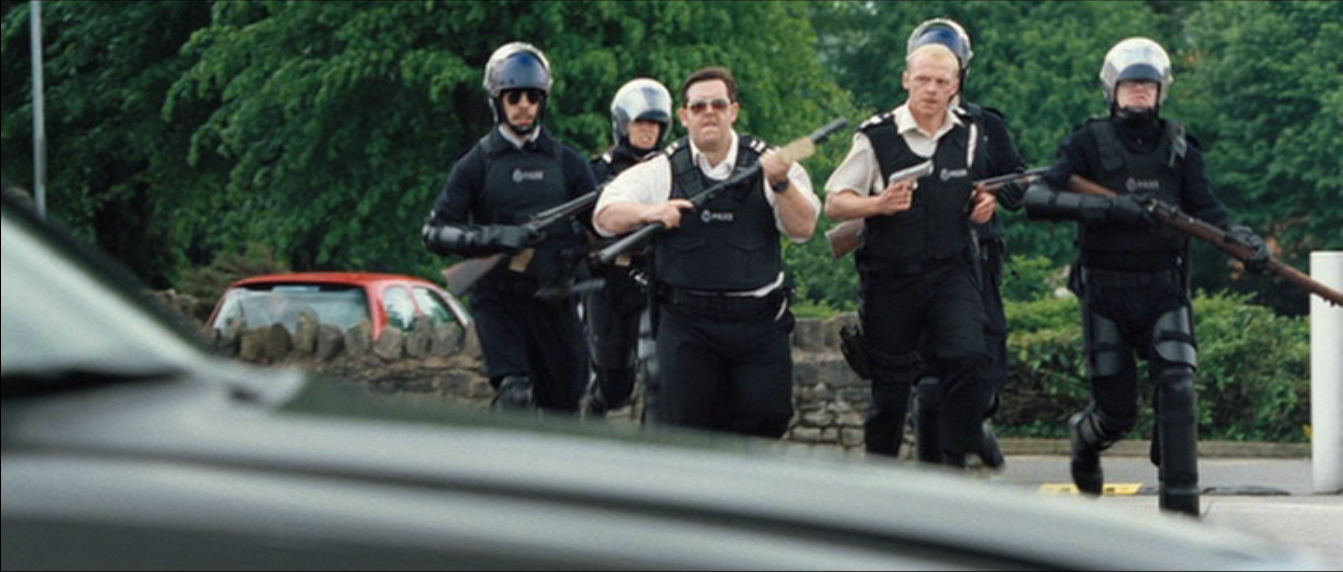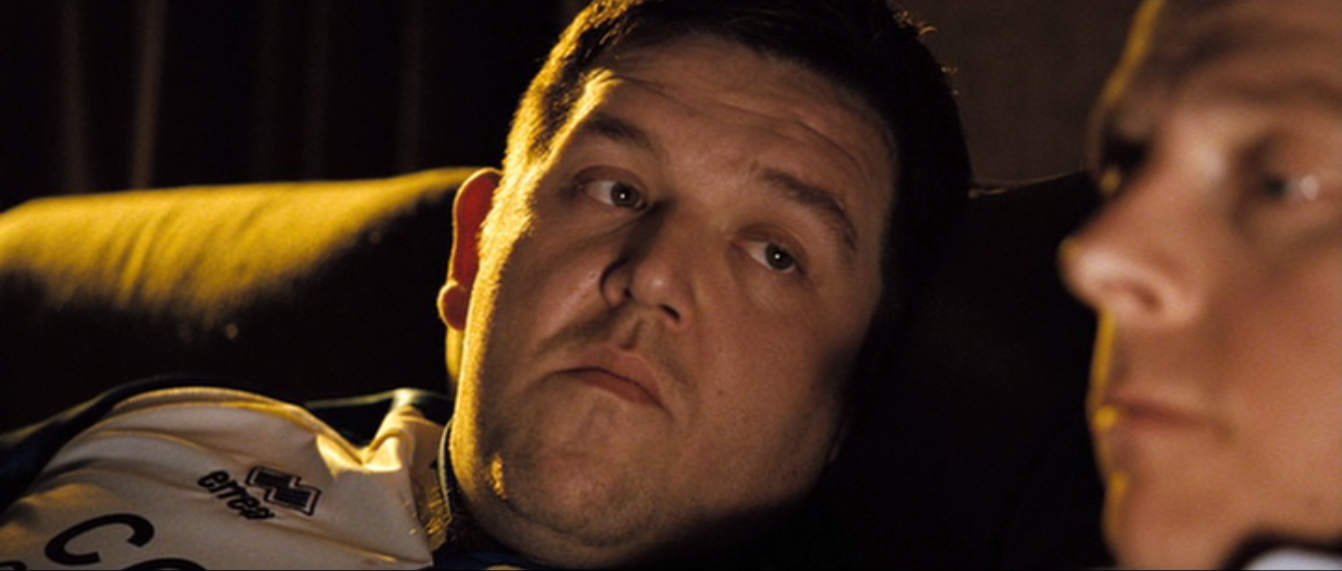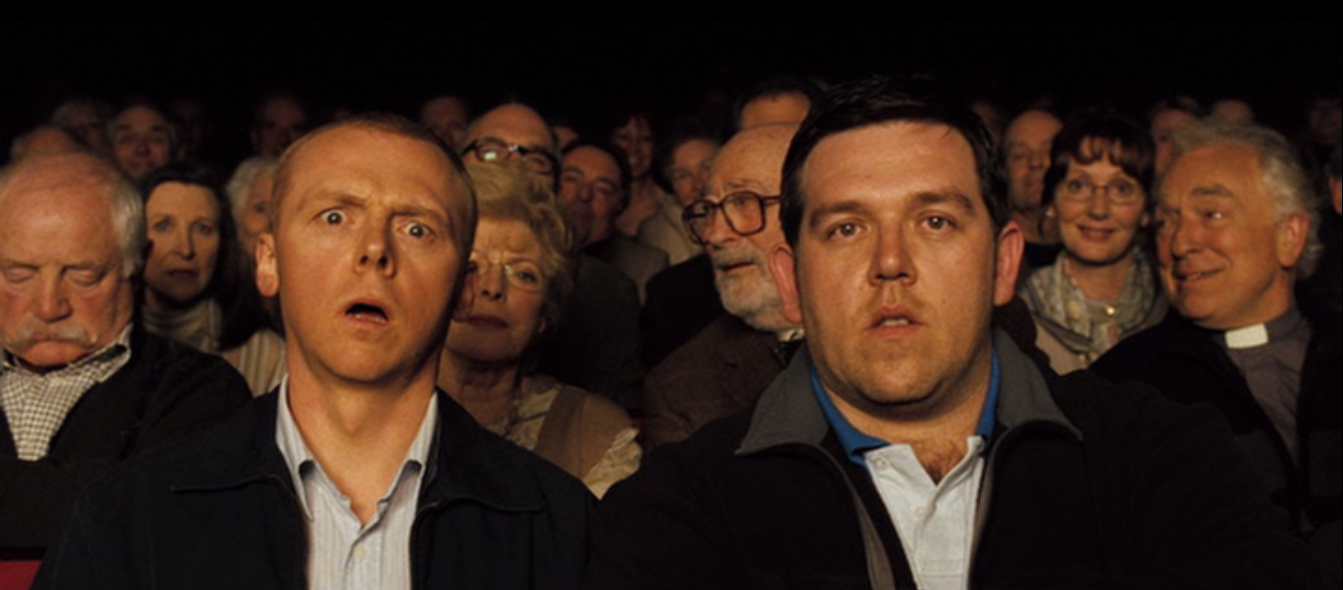Let’s not mince words. Of the classic Muppet films, The Muppets Take Manhattan is my least favorite. I know, I know. I’m an awful human being who hates fun. But I think part of the reason this one leaves me cold is that it sits between two of the best things Jim Henson and his collaborators ever did: The Great Muppet Caper, which is the Maltese Falcon of movies staring piles of colored felt, and Follow That Bird, which I won’t be covering here, but which I assure you is brilliant and which you need to watch even if you think you’re way too old for it.
The Muppets Take Manhattan is just…strange. It doesn’t feel like the Muppets to me. Or…well, scratch that. It absolutely does feel like the Muppets, but only intermittently. When it does, it’s great. But when it doesn’t, which is most of the time, I find myself tuning out. My eyes wander. I look for interesting background details or try to figure out how much of a given street or park was blocked off for filming.
In short, I stop paying attention. And how in shit’s name is an amnesiac frog and a psychotic pig trying to make it on Broadway incapable of holding my attention?
Speaking of which, maybe I just missed them, but I can’t find many interesting background details. Forget the mass of Muppet cameos at the end; those are great, but minor character crowd scenes are a given for a film like this. I’m talking about things like the Rev. Harry Krishna sign in The Muppet Movie, or Nicky Holiday’s door reading IRRESPONSIBLE PARASITE. Little flourishes that end up populating the background because there’s no space for them in the zippy dialogue.
For a Muppet film, I guess, The Muppets Take Manhattan just doesn’t feel especially inventive. And perhaps the reason jokes didn’t bleed into the background is that there was enough space for them in the dialogue, which doesn’t pop the way it does in the previous two films.
Here there are long, talky stretches that don’t manage to be funny or interesting. The previous films were so heavy with gags that they kept coming through the end credits. This one doesn’t seem to have enough laughs to go around, so it pads out a lot of space between them.
I hate to say it, because it’s not as though the actors are to blame, but I think this is due to the fact that so much screen time is given over to Kermit’s waitress friend Jenny and her father. Neither of them really get any punchlines or zingers, but they get an awful lot to say, which makes the film feel empty, at times seeming like a drama that forgot the emotion even more than it feels like a comedy that forgot the jokes.
Again, the actors are fine. Jenny is believably sweet and a nice, unintentional foil for the volatile Piggy, while her father is just some slightly batty but good-hearted sitcom Greek. They do what the film asks them to do, but, unfortunately, the film doesn’t ask them to do much. In fact, toward the end they both wink completely out of existence, making me question their utilities as characters in the first place. Like their dialogue, these two themselves feel like padding.
It’s especially weird since Kermit’s grand gesture at the end of the film is to invite everyone up on stage with him, including three new coworkers he doesn’t actually know and some unemployed penguins. But Jenny and her dad? Nah, to hell with them.
Seriously, that’s not Kermit. Those two gave him a place to stay, food to eat, and a source of income when he had nothing at all. Now he just says, “So, hey, thanks for putting my life back together when I had nobody, but now my real friends are here so you’d better go back to your failing restaurant”?
#NotMyKermit
But I’m getting ahead of myself.
At the very least, I should explain the plot. The Muppets Take Manhattan is the story of that time all the Muppets were homeless so they broke up and lived alone in constant grief. What a riot.
The project that ruins their lives is a musical called Manhattan Melodies, which they wrote for a show in college and which they spend every cent they have trying to bring to Broadway. As a result Piggy gets mugged, Gonzo gets mauled in a boating accident, and Kermit gets his skull caved in.
Damn.
Again, The Muppets Take Manhattan is weird, and there’s something uncomfortable about watching them squirm their way through these particular dire straits.
In The Muppet Movie they had to deal with unreliable vehicles and — indirectly — a lack of finances. In The Great Muppet Caper Gonzo had to freelance to pay for dinner and the gang had to lodge at the rundown old Happiness Hotel. So, okay, it’s not as though we’re used to the Muppets sitting pretty.
But The Muppets Take Manhattan feels too squalid. The poor guys have to sleep in lockers and go hungry. There’s even a scene in a montage that catches them staring hungrily through a window at somebody else’s sandwich. We’ve seen the Muppets weathering tough times, but I don’t think we’d ever seen them slowly starving to death in the streets.
It’s oddly horrifying. Henson and company spent many years bringing this strange troupe of magical creatures to life just to have them perish in a Manhattan gutter. It’s so sad that by the time Kermit is struck and nearly killed by a taxi, it barely even registers as anything out of place. That’s just New York, baby.
I mean Jesus Christ. Look at that.
The Muppets Take Manhattan is bleak, but it’s not exactly a dark comedy. It’s more of a dark tragedy. I don’t need my laughs to be light and without consequence, but I do need laughs of some kind.
I’m exaggerating, though, of course. The movie has its moments, and it has some great ones. But they tend to either come too infrequently, or have black undertones of their own.
For instance, the scenes in which the Muppets write to Kermit, describing their individual journeys, are pretty funny. Scooter works in a theater, which is cute. Gonzo performs stunts for disinterested audiences, which makes for several of the film’s biggest laughs. (Cutting to the guy in the chicken suit, who Gonzo then calls Margaret, is the single best gag in the movie.) And The Electric Mayhem learns the joys of prostituting their talents in exchange for a paying gig.
So far, so good. But then there’s a scene in which Rowlf, off on his own and trying to make a living, manages a kennel. It’s a funny idea for the character but it pivots on a dime into a room full of dogs howling and crying that they want to go home. Rowlf joins them, because he wants to go home, too.
It’s painful. And a scene in which a lonesome Fozzie pines for Kermit when he’s supposed to be hibernating is only less painful by comparison. On its own it’s heartbreaking, too, because we know how much Kermit meant to him.
I think that’s part of what gives The Muppets Take Manhattan its own weird atmosphere; it wants the Muppets to be sad. They aren’t having fun. They’re struggling to sell their show to Broadway, then they’re struggling to not tear out each other’s throats, then they’re struggling to stay alive. This isn’t a Muppet adventure, this is a Muppet scramble for a crust of bread.
And that affects the viewing experience for me. I can take sad Muppets — and I like sad Muppets! — but I can’t take hopeless Muppets, which seems to be what this film is most interested in exploring. That’s a suspicion upheld by the fact that the one song that seems to have any real feeling in it is “Saying Goodbye,” a sorrowful farewell sung by each of the characters in turn as they say goodbye to Kermit, each other, and any hopes they might have had for the future.
It’s so dismal and sad that it’s easy to doubt that any of the characters believe their own lyrics. “Somehow I know,” they sing, “we’ll meet again. Not sure quite where, and I don’t know just when.” They’re trying to convince themselves that this isn’t over. That, in spite of everything, things are going to work out after this one unfortunate detour.
…and then they all slide off into the lives of sadness they knew they should have expected all along.
It’s a great song, and an effective sequence. And when you watch it knowing full well that several of the singers are no longer with us — Jim Henson, Richard Hunt, Jerry Nelson — it becomes tremendously sad. It’s written and performed so well that it becomes almost too real, and difficult to watch.
But as far as the music overall goes…well, have at me, because I don’t really think there’s much else worth salvaging here. (And for a movie about a Broadway musical, that’s especially unfortunate.)
“I’m Always Gonna Love You” is pretty cute, as we witness the (thankfully not literal) birth of the Muppet Babies. And “Together Again” borders on memorability. But that’s it. I just watched the movie and I couldn’t tell you how most of these songs went, with the compositions unraveling to the point that characters are just tunelessly speak-singing by the end of the film.
Composer Jeff Moss is no Paul Williams, but few people are, so that’s fine. The weird thing is that he is a Joe Raposo. Like Raposo, Moss wrote a wealth of great songs for Sesame Street. These include “The People in Your Neighborhood” and Oscar’s signature song, “I Love Trash.” For crying out loud, the guy wrote “Rubber Duckie”! So why his compositions fall so flat here whereas Raposo’s songs for The Great Muppet Caper were some of the best things he’s ever done, I have no idea.
It’s possible that they suffered due to the extensive rewrites the script went through. Perhaps he didn’t have much to work with at the time they needed the music, or he had to write general songs without a sense of where they’d actually fit in the story. I honestly don’t know much about it, but I do know that Frank Oz rewrote a large portion of the script that Tom Patchett and Jay Tarses turned in, and that there were additional rewrites due to certain actors and cameos dropping out just before production.
I don’t intend to speculate out of turn — I genuinely know very little about the creative struggles behind the film — and by no means do I intend to lay any blame at the feet of Frank Oz. Oz also directed this film, and it’s gorgeously done. Shots are framed beautifully, the colors on the Muppets are striking in ways they weren’t in the previous two films, and there’s a sense of a real, living New York going on in the background, even though we know we’re looking at a sea of paid extras.
So Oz definitely gave that side of the production his all, for sure, and his performances of Fozzie, Piggy, and Animal are all on point. Did his meddling cripple the script? Maybe, maybe not. I can’t say. It’s just as likely that Patchett and Tarses turned in a dud to begin with. Or that losing Jerry Juhl — who wrote for the previous two films and The Muppet Show — meant the script simply couldn’t keep up with the rapid-fire comedy of its predecessors.
Of course, it’s also possible that watching the Muppets die miserable and penniless in the world’s shittiest city just wasn’t all that conducive to comedy. IT IS IMPOSSIBLE TO KNOW.
But that’s just my experience with The Muppets Take Manhattan. I’ve heard from others who say that it’s their favorite of the films. I can’t fathom that, personally, but they probably can’t fathom my personal love for The Great Muppet Caper. (The insane idiots!)
I always invite comments on these articles, and I genuinely look forward to them any time I post something. (Whenever a piece gets no comments I sing “Saying Goodbye” as I tearfully ride away from my life on the back of a flatbed truck.)
But here, especially, I’m looking forward to hearing from folks who do love the movie. I know my review sounds harsh, but it’s not so much that I want to change your opinion as it is that I want to explain mine, and then hear yours.
If anyone can help me enjoy The Muppets Take Manhattan as anything other than a puppet snuff film, believe me, I’d love to hear from you.
Anyway, where was I? Ah, yes, bitching about the ways one puppet movie isn’t as good as some other puppet movies.
Another way this puppet movie isn’t as good as some other puppet movies is its cameos. Again, evidently some big names were attached to The Muppets Take Manhattan, and for one reason or another they dropped out. I don’t mind that, and I don’t even know if that’s especially relevant. All that actually matters is what made it to film, and…the cameos leave something to be desired.
The Muppet Movie had Orson Welles, Steve Martin, Mel Brooks, and too many other huge (and game) names to list. The Great Muppet Caper had John Cleese, Peter Falk, Peter Ustinov, and…I can’t remember. I feel like the guard that hates pepperoni was somebody famous. But, okay, the point is, they were all awesome, even if there were fewer.
The Muppets Take Manhattan has plenty of actors who do the best with what they’re given, but on the whole they don’t get much. Art Carney, Liza Minnelli, and Brooke Shields are all completely wasted. Dabney Coleman and Linda Lavin each get some good lines, but, come on, it’s Dabney Coleman and Linda Lavin. You don’t even know who those people are. I could have made them up! You have no idea!
There are two redeeming cameos, though. Pairing Miss Piggy with Joan Rivers, for instance, is genuinely inspired, and I adore the way Rivers helps Piggy cope with her broken heart by clowning around with makeup. It’s such a perfect little sequence that taps very believably into the way a little bit of silliness between friends can help us make it through difficult times. It doesn’t solve Piggy’s problems — nor should it — but it works exactly the way it should, and I love it.
The other great cameo is Gregory Hines, in the only sequence that could have sat comfortably in either of the previous films. He plays a guy in the park who gets roped into mediating a lovers’ spat, and he clearly relishes the opportunity to occupy some part of the Muppet universe.
Hines loves what he’s doing here, vacillating between supporting Kermit and supporting Piggy, consoling each of them as necessary, and, ultimately, realizing he’s never getting his roller skates back, leaving them to figure things out for themselves.
It’s adorable, and I honestly wish Hines got to do this in a better film. As it stands, he’s this movie’s Steve Martin or John Cleese, and that’s great company to be in. He manages to be an exceptional cameo in a film that clearly has no idea what to do with them.
But the real problem with this movie, I think, is that it’s a Muppet movie without the Muppets.
It has a Muppet. Kermit, of course. The rest of the gang spends the beginning getting antsy, and turns up at the end, of course, but otherwise, they just about disappear. It’s not The Muppets Take Manhattan. It’s Kermit Hustles His Way Through the City For a While, with Special Guests the Muppets.
They each have their solo stories (which are really more like abbreviated solo chapters) but they’re so segmented. I don’t know. I guess I don’t really care for finding out what Fozzie gets up to, or Scooter, or Rowlf. What I care for is finding out what Fozzie and Scooter and Rowlf get up to together. They’re Muppets, for crying out loud. They’re a motley crew of bizarre characters that work best when there’s lots of them bouncing off of each other and interacting.
The Great Muppet Caper had the perfect balance, I think. No, Sam the Eagle and the Swedish Chef and Janice didn’t get to do much, but they were always there, part of the group, and got to pipe up when they had something funny to say. It worked well. We got the sense that they were always part of the proceedings, even when they might as well not have been.
They didn’t splinter off just to appear in a brief, solo segment to deliver their one joke. They were part of a team, however loosely, and that meant something. It was especially meaningful toward the end, when Fozzie got them all to band together. They meant something to each other, and to their cause, even if we only heard from them when it was their turn to deliver a line.
Here we need to shoot off to another time and place to hear from them at all…something which is such a narrative and logistical hassle that we barely bother doing it.
And I never thought I’d have any reason to say this, but, man, there is just way too much Kermit.
To paraphrase my review of the Muppet Movie, Kermit was always the center of the production, but not the center of attention. Here he definitely becomes the latter, and as much as I love him, as incomparable as Jim Henson’s performance is, as endlessly charming a character as he will always be…man oh man do we start to realize how important variety is in a Muppet production.
Separating Kermit from the other Muppets for so long is like stranding the Stooges in three separate stories. It’s like sending Stan Laurel on one adventure, and Oliver Hardy on another. Or like a Monty Python film in which we follow Terry Jones doing something alone for 70 minutes, with the rest of the cast appearing only in brief inserts.
It gets tiring. And, worst of all, it gives me no pleasure to report, it gets dull. The Muppet Show may have felt, at times, like The Kermit Show, but it never actually was. And The Muppets Take Manhattan makes it very clear how much less enjoyable (and memorable) The Kermit Movie would have been.
And also regarding the ending: what the fuck is up with the ending? I get that the Muppets finally get to mount their Broadway show, but…then what?
They’re not poor anymore? Where do they live? What do they do next? Now they’re just famous and never have to worry about anything again?
And I really don’t understand why the movie ends with Piggy tricking Kermit into marrying her during the play. I feel like that ties up one very specific concern that one very specific character had, but not the movie we’ve been watching.
But, okay. Okay okay.
This is a wedding. This is supposed to be a happy occasion. So let’s say some nice things.
Which, to be honest, despite everything I’ve said above, is not actually very difficult at all. The Muppets Take Manhattan might be my least favorite of these, but that doesn’t make it bad. At worst it just makes it disappointing, and it’s only a disappointment because the previous two movies set the bar so high. If, say, Project: ALF (which was a load of shit) had even a fraction of the heart, humor, and charm of this movie, I’d have done a cartwheel.
The Muppets in this film are still the Muppets. Their characters are true to who they are. Sure, I might not want to see Rowlf howling in anguish because he misses his friends, but that doesn’t mean I doubt he’d do it. Watching the Muppets here isn’t a betrayal of who they are…we just happen to catch them at their lowest points, like watching the Beatles in Let it Be. They’re still who they always were…they’re just not the way you usually see them. Or might wish to see them.
And even though I think there’s too much Kermit once the gang splinters, it’s nice that Rizzo is already a resident of Manhattan, as he gives the film some sorely needed variety during that stretch. It’s also, of course, great that Piggy only pretends to leave with the others. What an absolutely perfect Piggy detail.
I’d still like to see more of her, and I wish her one-sided rivalry with Jenny disappeared for a stronger reason than the fact that the script says it disappears, but she, too, offers a nice reprieve from the frog-centric story.
Throughout Piggy gets some great moments. We’ve talked about her scene with Joan Rivers, but immediately before that she quietly stews over finding Kermit and Jenny together on a bench…until she breaks and madly assaults a trash can with a pipe. And later on when she spies them in the park she jogs after them, and immediately starts wheezing and doubling over.
Again, an absolutely perfect Piggy detail.
There’s also the “Rat Scat” sequence, in which Rizzo and his tiny little puppet pals man the kitchen and prepare breakfast. It’s adorable in a slightly nauseating sort of way, and an impressive feat of puppetry several times over. I can’t even describe this one…you really do need to watch it, and it’s absolutely a highlight of the film.
In fact, Rizzo in general is a highlight, and it’s nice to see Steve Whitmire getting so much to do. Rizzo’s presence is also a chance for Frank Oz to solve some logistical puzzles as a director. When you have, for instance, Rizzo, Kermit, and a human sharing the screen, that’s three different scales. Their sizes are all different, and you can’t show the puppets from the bottom, or cut off the tops of the humans. How do you shoot them?
Oz comes up with several solutions that are so natural you won’t even notice unless you’re looking for them, and I love that. The Muppets Take Manhattan doesn’t give me as much enjoyment, but that doesn’t mean there isn’t plenty to appreciate.
That’s my my opinion, though. And the nice thing about Henson’s body of work (okay…one of several hundred thousand nice things) is that different people connect with different projects. The Muppets Take Manhattan might not be the film I turn to first, but it is that film for somebody else.
I love Muppet Babies, but I know that others found the show annoying and embarrassing. I’ve only seen a few episodes of Fraggle Rock, but others grew up with it, and it was their Sesame Street. Some people prefer the electrified insanity of The Muppet Show, and others prefer the slower films. There are those who love Labyrinth and those who prefer The Dark Crystal. And we’re just scratching the surface here. There are others whose favorite Henson production is something I haven’t even mentioned.
And that’s beautiful.
Henson’s work in general, and the Muppet stuff in particular, was always about inclusivity.
However different we might look, or sound, or behave…however different we are…can’t we all be happier together?
As Kermit put it two movies ago, in words that succinctly explain everything Henson ever did, that’s the kind of dream that gets better the more people you share it with.
Jim Henson and the rest of the writers and builders and puppeteers and everybody else involved celebrated difference. Embraced difference. Created characters who were proud of their difference. And then brought them together anyway. Because being part of a group didn’t mean that you had to forget who you were, or become somebody else. It just meant that you could accomplish so much more. That you could be part of something bigger.
And that you could make a lot of people very happy.
I don’t know how consciously Henson wished his works to be a social statement. To be honest, I’m not sure he did think much about it. I get the feeling that it just came naturally to him, and to the people he worked with.
He created a universe that was better — objectively better, safer, more accepting, more tolerant, more encouraging, more caring, more loving — than the one he inhabited.
And he let us all come in, too.
His characters may have just wanted to get to Hollywood. Or catch those jewel thieves. Or stage their play on Broadway.
But the impacts they left on people — on children especially, but on people in general — were much larger and deeper than that.
Jim Henson changed lives. And he changed them in so many ways, through so many projects, that it doesn’t matter if The Muppets Take Manhattan wasn’t for me.
It was for somebody else who really needed it. And that person — those people — got their message from him, too.
I couldn’t possibly be more grateful.













































